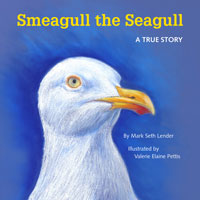Science Note: Clever Cockatoos use Drinking Fountains
Air Date: Week of October 10, 2025

A sulphur-crested cockatoo walking on the grass in Risdon Brook Park, Tasmania, Australia. (Photo: JJ Harrison, Wikimedia Commons, CC BY-SA 3.0)
After observing sulfur-crested cockatoos using a drinking fountain, Australian researchers reported that most of the local population of cockatoos attempted to use the fountains, and around half were successful. Living on Earth’s Don Lyman reports on the research findings and hypotheses for why these clever cockatoos have developed this habit.
Transcript
LYMAN: A few years ago, researchers from the Australian National University in Canberra, were studying sulfur-crested cockatoos in an urban environment, when they noticed an unusual and surprising behavior, even for these notoriously intelligent members of the parrot family. They saw the birds using a drinking fountain.
After local park rangers told the scientists that this was a regular behavior for the parrots, the researchers set up cameras in the Charlie Bal Reserve to capture video of the birds’ fountain drinking behavior.
The scientists observed that the cockatoos gripped the fountain with one foot, and twisted the handle with their other foot, releasing flowing water. The thirsty birds then leaned to the side with their body before tilting back to drink.
In their recently published findings, the research team reported that about 70 percent of the local population of cockatoos they studied attempted to use the fountains, and half of them were successful. Lead author Lucy Aplin said that the widespread nature of the fountain drinking behavior suggests that this may be a local cultural tradition among the cockatoos.
Aplin noted the birds congregate at fountains, and patiently wait their turn to get a drink, sometimes waiting as long as 10 minutes to quench their thirst.
The scientists hypothesize that the fountains are a safe, relatively predator-free place to rehydrate, or maybe drinking from a communal fountain promotes social cohesion. “Or maybe the water just tastes better than the contents of a muddy creek.”
That’s this week’s note on emerging science. I’m Don Lyman.
Links
Living on Earth wants to hear from you!
Living on Earth
62 Calef Highway, Suite 212
Lee, NH 03861
Telephone: 617-287-4121
E-mail: comments@loe.org
Newsletter [Click here]
Donate to Living on Earth!
Living on Earth is an independent media program and relies entirely on contributions from listeners and institutions supporting public service. Please donate now to preserve an independent environmental voice.
NewsletterLiving on Earth offers a weekly delivery of the show's rundown to your mailbox. Sign up for our newsletter today!
 Sailors For The Sea: Be the change you want to sea.
Sailors For The Sea: Be the change you want to sea.
 The Grantham Foundation for the Protection of the Environment: Committed to protecting and improving the health of the global environment.
The Grantham Foundation for the Protection of the Environment: Committed to protecting and improving the health of the global environment.
 Contribute to Living on Earth and receive, as our gift to you, an archival print of one of Mark Seth Lender's extraordinary wildlife photographs. Follow the link to see Mark's current collection of photographs.
Contribute to Living on Earth and receive, as our gift to you, an archival print of one of Mark Seth Lender's extraordinary wildlife photographs. Follow the link to see Mark's current collection of photographs.
 Buy a signed copy of Mark Seth Lender's book Smeagull the Seagull & support Living on Earth
Buy a signed copy of Mark Seth Lender's book Smeagull the Seagull & support Living on Earth

